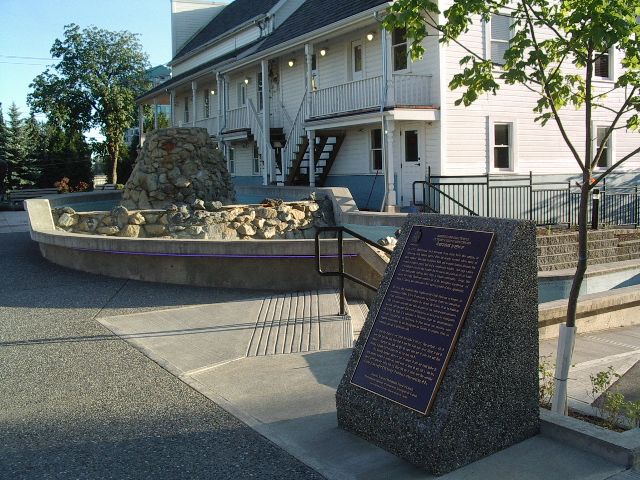Abbotsford Sikh Temple National Historic Site

© Parks Canada / Danielle Hamelin, 2002
The Abbotsford Sikh Temple was designated a national historic site in 2002.
Commemorative plaque: 33089 South Fraser Way, Abbotsford, British Columbia Footnote 1
Abbotsford Sikh Temple
In 1911, determined Sikh pioneers from India built this temple, or Gurdwara, with lumber carried from the nearby sawmill where many of them worked. Blending traditional Sikh and western frontier designs, the temple includes a prayer hall and a community kitchen. Not only a place of worship, it also became a centre for the social and political life of South Asian immigrants, helping them forge a vibrant community. Today, this oldest surviving Gurdwara reminds us of the immigrant experience of Sikhs in Canada, and continues to be a sacred symbol of their spirituality.
Description of historic place
Abbotsford Sikh Temple National Historic Site of Canada is located on a one-acre property at the crest of a hill in the centre of Abbotsford, in the Lower Fraser Valley of British Columbia. Built in 1911, this simple, rectangular, gable-roofed building is of wood-frame construction clad in wood siding. The false fronted façade that faces the street is typical of Canadian commercial vernacular architecture of the period. A verandah runs along three sides of the building on the second floor. Official recognition refers to the building and its legal lot.


Heritage value
Abbotsford Sikh Temple was designated a national historic site of Canada in 2002 because:
- it is the oldest surviving example of the temples which played a crucial religious, social and political role in the pioneer phase of Sikh immigration to North America;
- it continues to embody both the fundamental beliefs of the Sikhs and their early immigrant experience in Canada; and,
- its architectural form represents a pragmatic adaptation of Sikh traditions to the Canadian context.
The Abbotsford Sikh Temple is an early example of a Sikh temple and was part of a network of temples that represent the pioneering phase of the Sikh community in Canada. Built by early immigrants, the structure reflects the limited resources of the builders and their adaptation of a Canadian architectural type, namely, the false-front building. Built in 1911 and used continuously since then, the temple is evidence of the early roots of the Sikh community and of the larger Indo-Canadian community that is located in this region of Canada. The structure’s simple design blends a Canadian architectural form with all the key elements of a Sikh religious building’s structural traditions including the prayer hall, the four entrance doors, the Sukh Aasan, (the room where the Guru Granth Sahib was kept) and the Granthi’s quarters on the second level, the communal kitchen, and the dining area. These architectural features have religious meaning and symbolize the openness of the temple to all, regardless of caste, creed or colour.
Sources: Historic Sites and Monuments Board of Canada, Minutes, April 2002; Commemorative Integrity Statement.
The National Program of Historical Commemoration relies on the participation of Canadians in the identification of places, events and persons of national historic significance. Any member of the public can nominate a topic for consideration by the Historic Sites and Monuments Board of Canada.
- Date modified :